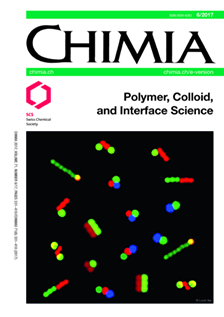Molecular Strategies for Morphology Control in Semiconducting Polymers for Optoelectronics
DOI:
https://doi.org/10.2533/chimia.2017.369Keywords:
Conjugated polymers, Photovoltaics, Semicrystalline, Solution-processing, TransistorsAbstract
Solution-processable semiconducting polymers have been explored over the last decades for their potential applications in inexpensively fabricated transistors, diodes and photovoltaic cells. However, a remaining challenge in the field is to control the solid-state self-assembly of polymer chains in thin films devices, as the aspects of (semi)crystallinity, grain boundaries, and chain entanglement can drastically affect intra-and inter-molecular charge transport/transfer and thus device performance. In this short review we examine how the aspects of molecular weight and chain rigidity affect solid-state self-assembly and highlight molecular engineering strategies to tune thin film morphology. Side chain engineering, flexibly linking conjugation segments, and block co-polymer strategies are specifically discussed with respect to their effect on field effect charge carrier mobility in transistors and power conversion efficiency in solar cells. Example systems are taken from recent literature including work from our laboratories to illustrate the potential of molecular engineering semiconducting polymers.Downloads
Published
2017-06-28
Issue
Section
Scientific Articles
License
Copyright (c) 2017 Swiss Chemical Society

This work is licensed under a Creative Commons Attribution-NonCommercial 4.0 International License.
How to Cite
[1]
Chimia 2017, 71, 369, DOI: 10.2533/chimia.2017.369.







